Pumice stones are typically used to remove dry dead skin from the feet. But can you use these pumice stones on your stainless steel surfaces such as sinks, stoves, etc?
In this article, we’re going to answer all the questions regarding cleaning stainless steel with a pumice stone and how to properly clean and maintain your stainless steel
Can You Use a Pumice Stone on Stainless Steel?
You cannot use a pumice stone on stainless steel because Pumice stones are abrasive and they’ll leave scratches on the steel finish.
A pumice stone is a light, non-toxic stone formed when hot lava and water are combined and as such it is abrasive. This can be used effectively on surfaces like ceramic or porcelain.
How to clean a Stainless steel sink? (Without scratching it)
Through daily use, stainless steel sinks can get quite dirty with tough-to-remove stains and dried-up residue from dirty dishes.
However, to avoid any scratches on the finish of the surface, you have to know the proper ways to clean your sink.
Here are a few methods that you should consider to clean those stained and greasy stainless steel sinks:
Method 1: Using Soap & Water
Before reaching for any fancy cleaning materials, you don’t realize that you can clean your stainless steel sink with simple items like warm soapy water, a soft sponge, and olive oil.
STEPS
Step 1: Take a clean soft foam sponge towel and dip it in warm water.
Step 2: Add a little bit of dishwashing soap to the water and then wipe the sink with the soapy sponge (Make sure to wipe with the grain and not against it).
Step 3: After washing the floor, walls, and corners of the sink, take a microfiber towel and dip it in fresh clean water. Gently, wipe off the soap from the sink with the microfiber towel.
Step 4: Use a paper towel to dry off any excess water from the sink.
Step 5: To restore the glossy shine, put a few drops of olive oil on a clean paper towel and then wipe the sink with it.
Step 6: Take another sheet of paper towel and buff off any excess oil. Make sure to gently do this for a few minutes to get it properly dry and shiny.
Method 2: Using WD-40
Another very quick and easy method to clean your sink is using a lubricant such as WD-40.
STEPS
Step 1: Remove any dirt and debris from your sink by thoroughly rinsing it with water.
Step 2: Wipe off the excess water with a microfiber towel.
Step 3: Next, you are going to spray a decent amount of WD-40 onto another clean microfiber towel and then use it to wipe all around the sink. As always, ensure to wipe along the grain and not against it.
Method 3: Using Baking Soda
If your sink is filled with those pesky hard water stains, then you can try following this slightly more rigorous method. You’re going to need some baking soda, white vinegar, stainless steel polish, and a few soft towels.
STEPS
Step 1: Rinse the sink with water to get rid of dirt.
Step 2: Apply a coat of baking soda evenly all over the sink surface and leave for about a minute.
Step 3: Then, use the soft end of a sponge to rub baking soda on the sink. Work along the grain and ensure to remove any stain build-ups around the faucet and corners of the sink.
Step 4: Pour some vinegar into a spray bottle and spritz it onto the baking soda you have on the sink. This will create a slightly foamy mixture and some sizzling sounds, but don’t worry it’s working.
Step 5: Rinse the sink thoroughly with clean water.
Step 6: Wipe off the excess moisture from the sink with a microfiber towel.
Step 7: Finally, spray some stainless steel polish onto another dry towel and slowly wipe it on the sink to restore the shiny finish.
How Do I Protect My Stainless Steel Sink?
The beauty of a stainless steel sink lies in the clean shiny look and it is very important to protect that clean finish from scratches and unnecessary wear and tear.
Follow these basic tips to protect your sink from scratches or wear and tear.
1- Do Not Use Abrasive Tools
To keep your stainless steel sink surfaces looking new, always make sure to avoid using any abrasive substances and cleaning tools like steel wool or scouring pads or brushes during your regular cleaning.
2- Use a Dish Mat
Heavy pots and pans can leave dents and minor scratches when you leave them in your stainless steel sink.
To protect your sink from this, you can use a rubber dish mat when washing heavy pots or cast iron.
Stainless steel dish mats are specifically also available and they offer even better protection.
3- Use Microfiber Towels
It is best to use a soft microfiber towel to clean your sink, this way you can be sure that there are no or minimal abrasive action and scratches.
4- Use Clean Tools
Whether you are using a microfiber towel or a soft sponge, make sure it is freshly cleaned. If you use a dirty one, there might be hard dirt residues on it that can scratch the stainless steel.
5- Clean with the Grain
While cleaning your sink with any tool, wipe the surface gently and along the grain. Do not wipe in circles.
To get a better understanding of this, take a look at your sink, you’ll notice there’s a grain to it.
This grain can either be vertical or horizontal, this means you’ll clean either left to right or top to bottom depending on the grain of your sink. This will prevent any potential scratches.
6- Don’t Leave Dirty Dishes and Food in the Sink for Long
To protect your sink, always make sure to avoid leaving acidic foods or dishes sitting in your sink for a long time. The acidity in these foods can corrode the stainless steel and cause it to rust.
How to Clean a Stainless Steel Stove?
Cleaning your stainless steel stove is an important maintenance routine that most people overlook.
We’re going to show you the many ways you can remove grimy dirt and gunk from your stove using a thorough cleaning process.
Method 1: Using Baking Soda
A great and easy way to clean your stove, this method only requires some warm water, a microfiber towel, and baking soda.
Step 1: In a small bowl, make a paste with baking soda and some water.
Step 2: Apply the paste all over the stove with a microfiber towel. Be sure to do this along the grain of the stove.
Step 3: Scrub the dirt and grime off the stove with a soft sponge.
Step 4: Dip a clean microfiber towel in some warm water and use it to wipe off the baking soda paste from the stove.
Do this slowly for a few minutes to properly get to all the corners and excess debris.
Step 5: Finally, spray some stainless steel polish onto a towel and use it to wipe all over the stove surface. This will polish the stove and restore the smooth shine.
Method 2: Using a Lubricant
Another easier way for everyday cleaning is to simply wipe down the surface with dishwashing liquid to remove all the grease and then finish it off with WD-40.
Here are the steps to follow:
Step 1: Add dishwashing liquid to warm water.
Step 2: Dip a microfiber towel in warm water and wipe the stove down with the soapy microfiber towel
Step 3: Rinse the towel clean and then wipe and buff away any excess soap and water.
Step 4: Spray a bit of WD-40 onto another dry microfiber towel and slowly wipe it all over the stove to remove any extra smudges.
Be sure to wipe along the grain during this entire process. This will restore the shine.
What You Should Not Use on Stainless Steel?
When trying to clean your stainless steel appliances and kitchenware it can be very easy to get pulled into trying all kinds of different cleaning tools, solutions, and scouring pads.
But it is very essential that you know that not all things can be used on stainless steel surfaces.
So here are a few things that should never be used on stainless steel:
1- Rough sponges, steel wool pads, and abrasive powders.
2- Many people try using glass cleaners like Windex to clean their stainless steel appliances but the ammonia in them can over time be slightly corrosive and cause damage.
3- Bleach and other chlorine products can ruin the sleek finish.
4- Use clean distilled water instead of hard tap water.
5- Oven cleaners should be avoided on stainless steel surfaces.
Conclusion
To conclude, a pumice stone is great for scrubbing dead skin off your feet, but you should never use it on stainless steel because it can ruin the smooth finish of the surface.
To disinfect the stainless steel surfaces, always use non-bleach based products such as Lysol.

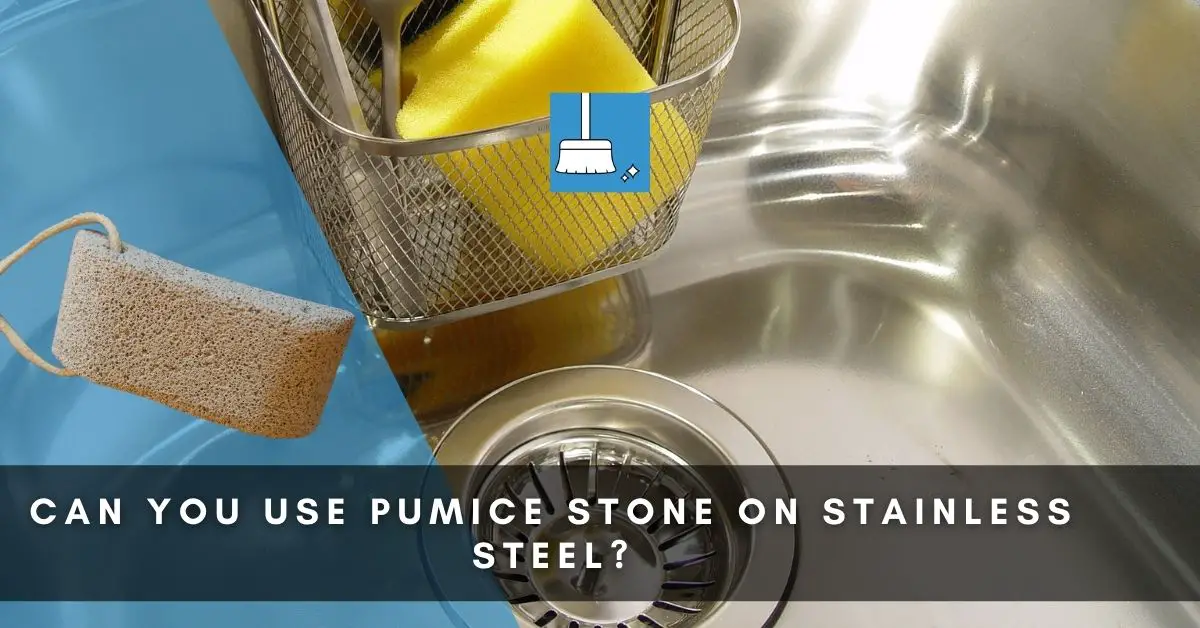
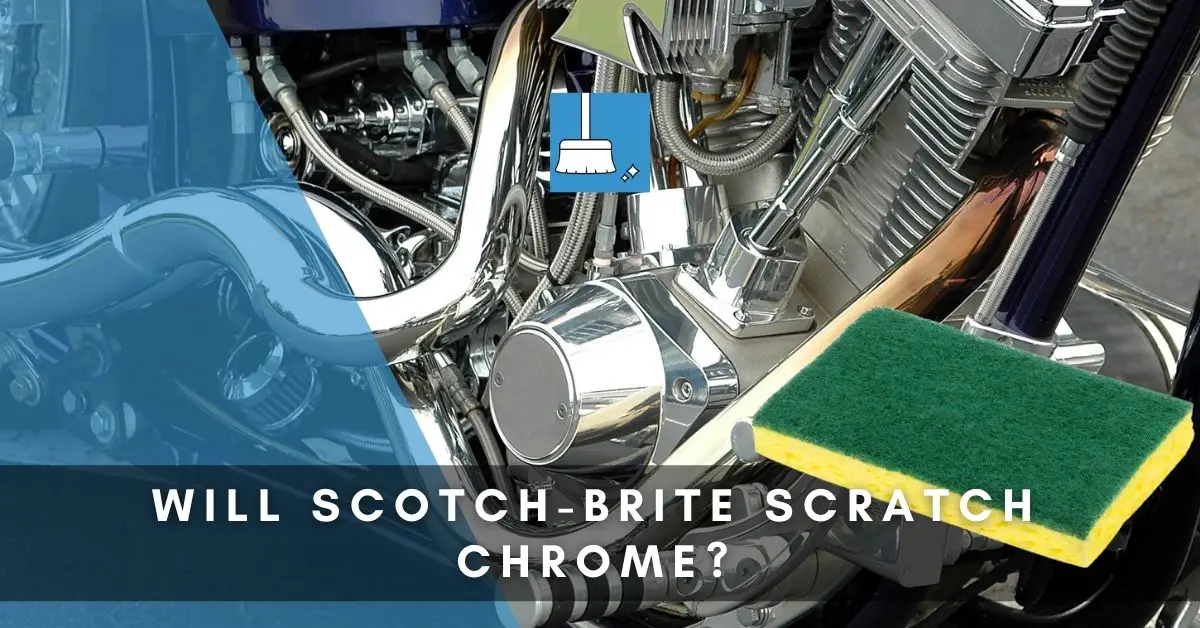
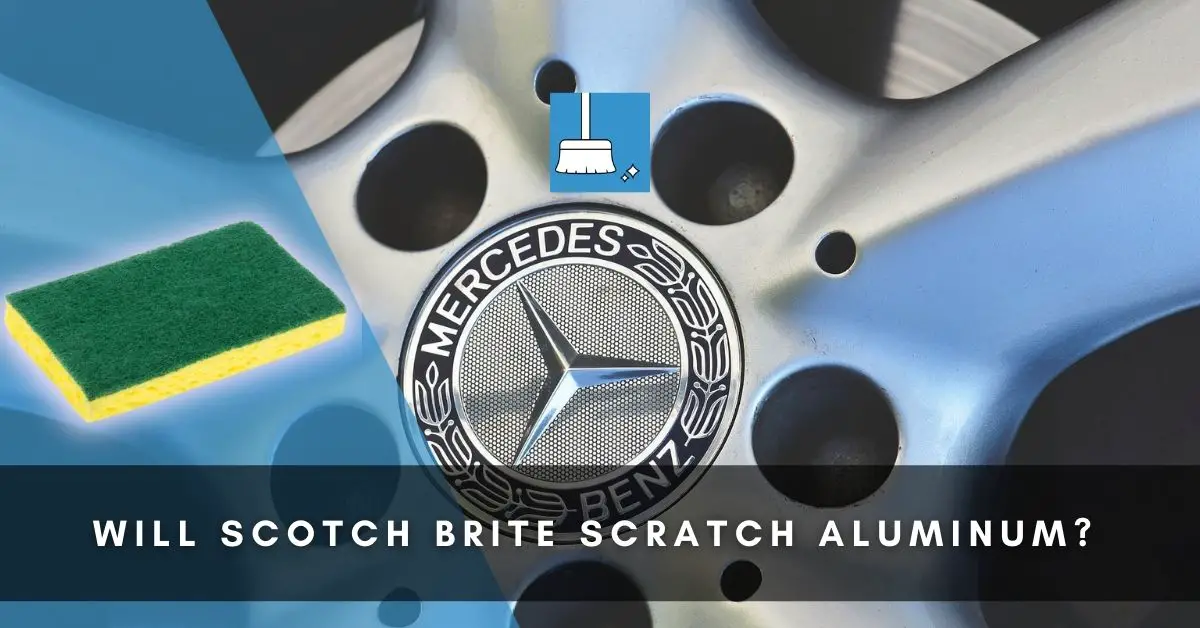
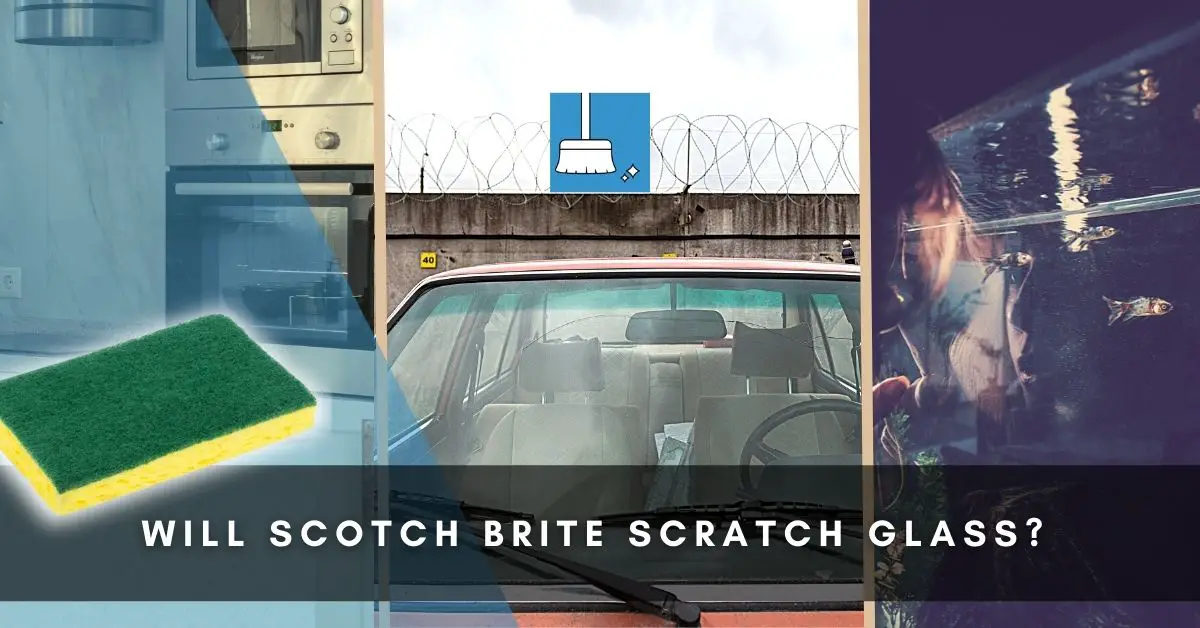
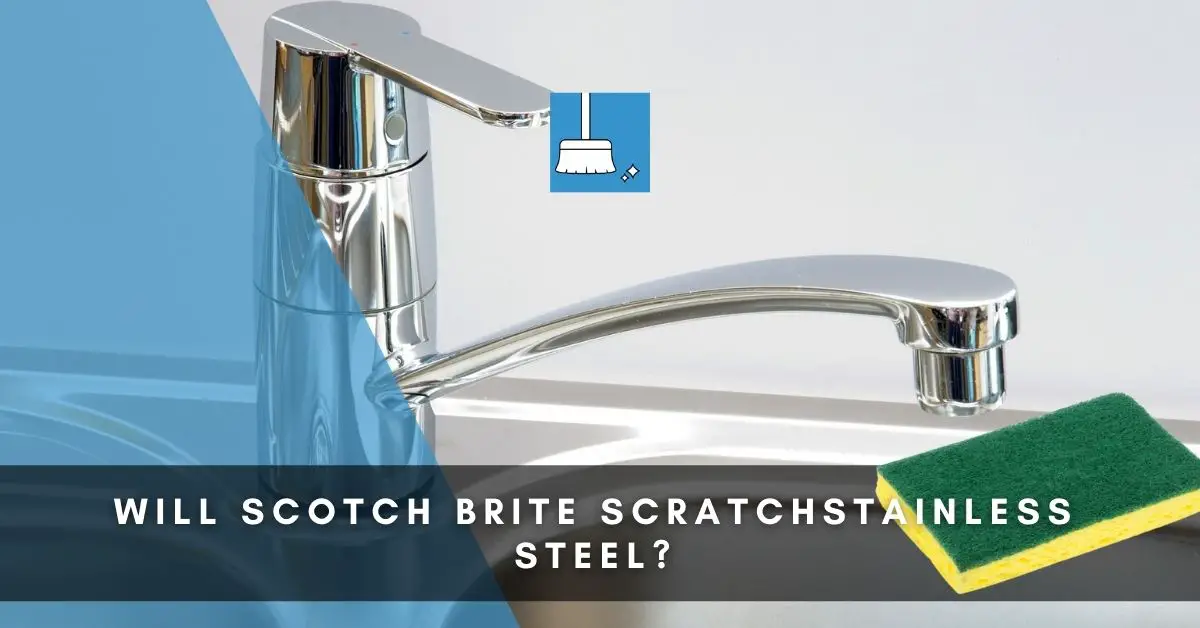

Pingback: Can You Use Magic Eraser On Stainless Steel? (Better Ways!) »
Pingback: Can Lysol Be Used On Stainless Steel? (Explained!) »